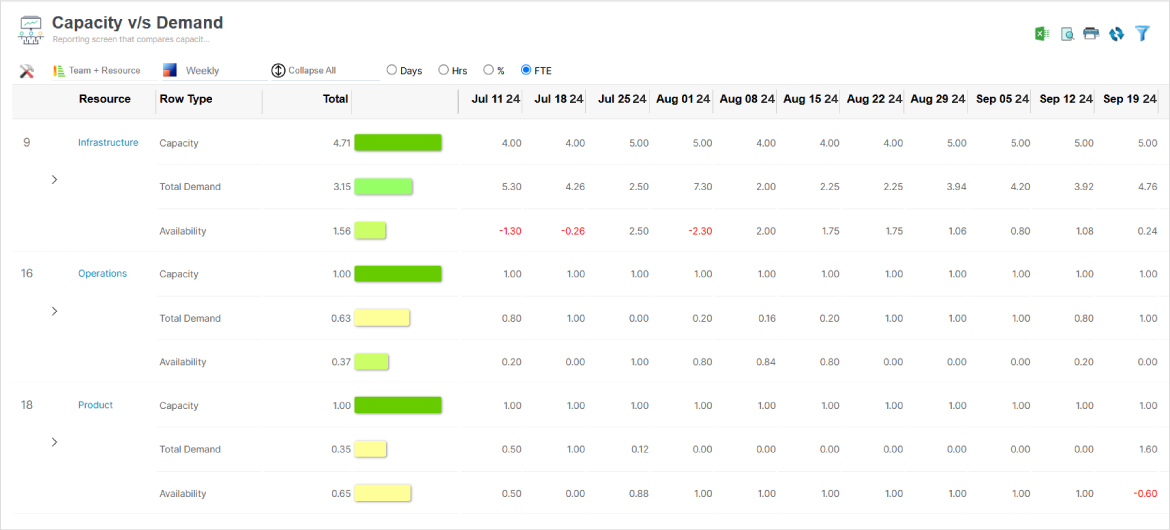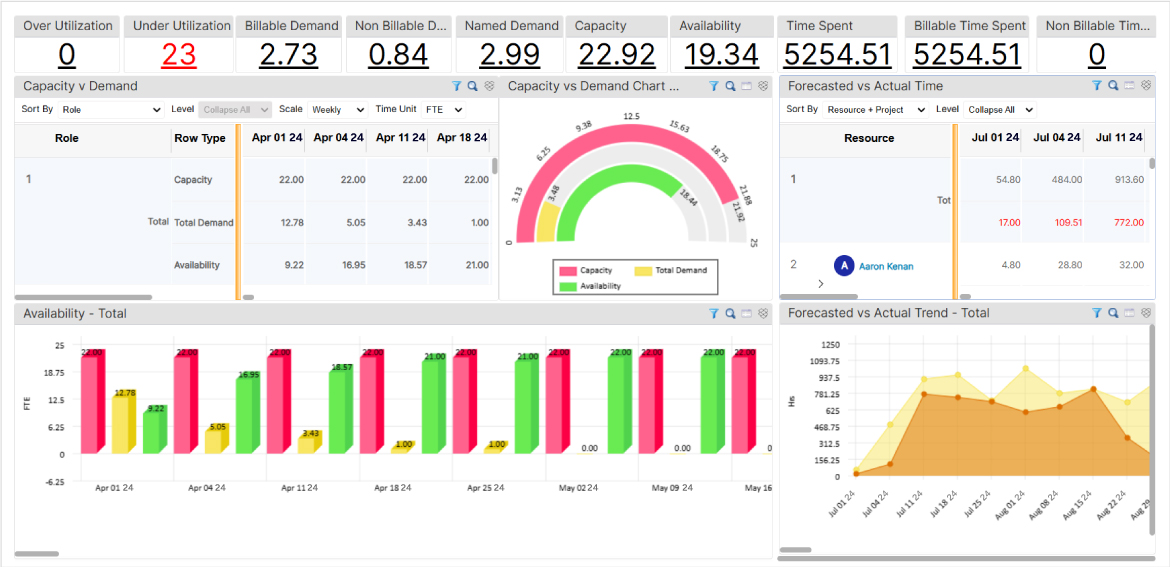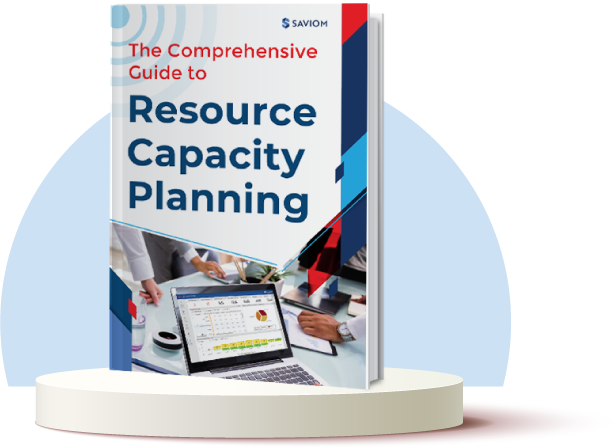In today’s business landscape, the difference between thriving and merely surviving often comes down to a company’s ability to adapt and grow.
Consider a once-small tech startup that has transformed into a market leader in just a few years. How did it achieve such a leap?
With new competitors emerging, market demands shifting, and technology evolving rapidly, the company realizes that sticking to the status quo won’t be enough to sustain its growth or outpace the competition. This is where a robust capacity-building framework becomes essential.
Capacity building enables the company to remain agile, respond to change, and tackle market challenges effectively. It equips the workforce with the right skills, knowledge, and capabilities, positioning the organization to seize new opportunities.
In this article, we’ll explore the concept of capacity building, the different types, and the strategies that can significantly enhance an organization’s performance and future success.
Let’s begin!
What is Capacity Building?
Capacity building is the process of enhancing employee skills, knowledge, and capabilities, as well as strengthening the firm’s infrastructure to achieve organizational objectives efficiently.
This involves implementing activities such as training, upskilling, mentorship, upgrading infrastructure, and more. Through capacity building, firms can address workplace challenges and cultivate an adept talent pool, ensuring sustainable, long-term growth.
Now that we’ve clarified the definition, let’s look at an example to understand the concept better.
Capacity Building Examples
Let us consider the example of an Audit & Accounting firm planning facing challenges in managing large volumes of client data during audits. Manual data extraction and analysis processes are time-consuming and prone to errors, limiting the firm’s ability to deliver high-quality audits on time.
Recognizing the need for change, the firm decided to implement a comprehensive capacity-building initiative focused on integrating advanced data analytics software that can:
- Automate tedious tasks
- Identify patterns
- Enhance the quality of audits
Upon deciding to implement this software, the firm assesses its workforce and identifies a key gap: most auditors lack the necessary expertise to utilize advanced data analytics tools effectively.
As a result, the firm organizes a series of workshops and certification programs designed to equip its auditors with the skills needed to leverage cutting-edge software for data extraction, visualization, and anomaly detection.
In parallel, the firm also invests in upgrading its IT infrastructure to support the deployment of the new software. By enhancing the technical skills of its workforce and optimizing its operational systems, the firm strengthens its capacity to deliver more accurate audits, reduce manual effort, and meet evolving client demands in a competitive market.
Now that we have a clear understanding of the concept, let’s explore its various types.
Types of Capacity Building
Companies can implement various types of capacity building based on the requirements. Here are a few common ones –
Employee-Based Capacity Building
Employee-based capacity-building focuses on enhancing the resource’s skills and capabilities through targeted training/ upskilling, mentorship, job shadowing, etc. These initiatives allow firms to address skill gaps, foster continuous learning, and adopt new technologies. Furthermore, providing such opportunities boosts employee job satisfaction, helping retain top-tier talent and build a skilled, motivated workforce.
Organizational Capacity Building
Organizational capacity building involves enhancing systems, processes, and workflows across the firm. It includes upgrading infrastructure, establishing robust policies, and strengthening core areas like leadership, strategic planning, and operational efficiency. These efforts enable firms to adapt to the evolving market demands and capitalize on these opportunities effectively.
Read More: What is Strategic Workforce Planning: Example, Benefits, and Best Practices
Systemic Capacity Building
Systemic capacity building refers to enhancing the interconnected components within a system by focusing on relationships, policies, and processes at a broader level. It involves collaboration with multiple stakeholders, like government, lawmakers, and civil society, to tackle systemic challenges. This ensures the development of robust systems that drive sustainable growth and long-term success.
Material-Based Capacity Building
Material-based capacity building focuses on providing the tangible resources necessary to enhance the capabilities of individuals, organizations, or systems. This approach involves supplying tools, equipment, technology, and other materials required to perform tasks efficiently. It often complements other capacity-building efforts, supporting enhanced business performance and growth.
Having explored the different types, the next section will highlight the difference between capacity building and planning.
Capacity Building Vs. Capacity Planning: How Do They Differ?
While both capacity building and planning aim to optimize resources, they differ in their approach. Let’s understand –
| Aspect | Capacity Building | Capacity Planning |
|---|---|---|
| Definition | It is the process of strengthening and enhancing employee skills and organizational infrastructure to improve business performance and achieve long-term goals. | It is the process of forecasting and bridging demand gaps to meet upcoming project requirements efficiently. |
| Scope | Broader, focuses on developing an optimal talent pool through training, infrastructure, and fostering a positive organizational culture | Specific, focuses on ensuring the firm has the right talent pool to meet current and future business needs. |
| Goal | To empower individuals or organizations to handle challenges and achieve business objectives. | To ensure the firm has a future-ready workforce for projects. |
| Timeframe | Long-term, aiming for growth and sustainability | Short to medium-term, driven by present and future capacity demand |
| Outcome | Increased skills, enhanced performance, adaptability, and resilience | Improved efficiency, addressing skill shortages and excesses seamlessly |
Read More: What is Capacity Planning? An Ultimate Guide for Business Efficiency
The following section will explore the benefits of implementing capacity-building initiatives within a firm.
Importance of Capacity Building Initiatives
One of the primary significances of capacity-building initiatives in an organization is that they equip the workforce with the necessary skills, expertise, and knowledge that help organizations address skill gaps, enhance employee performance, and drive innovation for long-term success.
Further, investing in capacity building boosts employee satisfaction and retention. When organizations prioritize employee growth through continuous learning opportunities, employees feel valued and supported in their career progression. This sense of personal and professional development leads to higher job satisfaction, reducing turnover rates and fostering long-term retention.
Lastly, capacity building plays a crucial role in succession planning, ensuring the company has a pool of skilled individuals ready to step into critical positions when needed. This way, companies can maintain continuity, ensure smooth leadership transitions, and remain resilient during times of change or uncertainty.
Read More: Agile Capacity Planning: Benefits and Key Strategies for Project Success
Let us now explore a few essential capacity-building strategies that organizations can implement.
10 Proven Capacity Building Activities for Organization
Below are a few strategies that firms can try –
Streamline the Onboarding Process
A well-structured onboarding process equips new hires with the right knowledge, tools, and resources to perform their roles effectively from day one. Further, by providing initial training sessions and personalized guidance, firms can minimize the learning curve, helping new employees quickly integrate into the organization.
Tailored onboarding plans based on roles ensure employees gain the skills and resources required to excel. This early investment in employee development strengthens organizational capacity by minimizing skill gaps and building a more cohesive workforce.
Foresee Upcoming Requirements and Identify Gaps
Managers must consistently forecast upcoming project requirements while evaluating current capabilities to identify the need for additional resources or skills. In case of gaps, firms can implement suitable resourcing measures proactively to address these shortfalls and build capacity effectively.
For instance, in case of resource shortage, managers can invest in upskilling, training, or implementing a phased hiring strategy. Similarly, when technological gaps are recognized, infrastructure upgrades can be initiated, ensuring the firm is well-equipped to meet future demands. This equips the team to meet project deadlines efficiently and boost business productivity.

SAVIOM’s advanced capacity planning feature allows managers to foresee pipeline demand and plan resource capacity accordingly.
Track and Analyze the Competency Matrix Regularly
To build capacity effectively, organizations must consistently maintain and update a competency matrix. It involves recording employees’ skills, qualifications, and experiences while tracking their progress over time. This enables managers to identify areas requiring improvement, ensuring the firm remains aligned with its goals.
Once gaps are identified, firms can initiate targeted training and upskilling programs, workshops, mentorship opportunities, etc., as part of skill development. Consequently, this enables organizations to build a versatile, future-ready workforce capable of tackling more complex projects.
Organize Training & Development Programs
Organizations must implement tailored training and development programs to ensure the workforce stays aligned with the latest industry trends, technologies, and best practices. This can include organizing workshops, online courses, certifications, cross-departmental training, etc., essential for addressing immediate skill gaps and building capacity.
Equipping employees with new skills and knowledge enables them to execute tasks faster and with greater accuracy. It also allows them to respond more swiftly to market changes and outperform competitors. As a result, they can drive higher productivity, directly contributing to the organization’s overall success.
Read More: How Can Retraining/Upskilling Future-Proof Your Workforce?
Create an Individual Development Plan for Each Employee
Managers must develop an Individual Development Plan (IDP) for each employee, outlining their career goals, strengths, and areas for growth. This helps create a clear roadmap for employees’ professional growth. As employees enhance their skills and progress in their roles, the organization benefits from a more capable workforce.
Moreover, when employees see that their organization is genuinely invested in their personal development, it boosts workforce engagement and fosters a sense of value. This, in turn, strengthens employee loyalty, improves resource retention, and ensures the organization has the talent needed to drive sustainable growth.
Foster Team Collaboration through Cross-Functional Initiatives
Encouraging cross-departmental collaboration allows organizations to tap into a broad range of skills, experiences, and perspectives, which are critical for addressing complex challenges. By breaking down silos, managers can leverage internal resources across departments, reducing reliance on external talent and lowering recruitment costs.
Moreover, the exchange of knowledge between departments builds organizational capacity, strengthening teams’ ability to innovate, adapt, and efficiently address emerging challenges. Over time, this collaboration sharpens decision-making, drives higher productivity, and positions the organization to thrive in the long haul.
Cultivate a Culture of Diversity and Inclusion
By cultivating a diverse and inclusive workforce, organizations ensure that all employees, regardless of gender, ethnicity, race, or religion, feel respected and valued. This creates a positive work environment and attracts top talent, resulting in a more stable and skilled workforce.
Moreover, a diverse team enables an organization to take on a wider range of projects, enter new markets, and adapt to the dynamic needs of clients. As a result, the organization is better equipped to scale operations, drive innovation, and secure long-term stability and sustained growth.
Read More: What is Diversity in Project Management and its Importance?
Use Automation Tools for Ad-hoc Work
Implementing automation tools for repetitive tasks like data entry, report generation, document management, etc., helps organizations streamline processes and minimize human error. Further, it allows employees to redirect their time and energy toward more impactful, strategic tasks that require creative thinking, and problem-solving.
By offloading routine tasks to automation, employees gain more opportunities for professional growth and skill development. This boosts their ability to handle more complex responsibilities and fosters personal growth, ultimately strengthening the organization’s talent pool.
Develop Succession Planning Strategies
Organizations should identify and nurture high-potential employees who can step into leadership roles when vacancies arise, whether due to retirements, promotions, or unforeseen departures. By providing targeted development opportunities, these employees gain the necessary skills for their future positions.
This approach helps preserve the organization’s values, culture, and strategic objectives during leadership transitions. Moreover, focusing on succession planning helps create a robust leadership pipeline, supporting short-term stability and long-term organizational success.
Measure ROI of Capacity Building Initiatives
Organizations must consistently evaluate capacity-building initiatives to understand the return on investment (ROI). Tracking key performance indicators (KPIs) such as productivity gains, employee engagement, and skill improvements provides valuable insights into the success of these initiatives.
This analysis enables organizations to identify which activities deliver the best results and refine their strategies to maximize outcomes. Regularly measuring ROI ensures that resources are allocated efficiently and that capacity-building programs remain aligned with long-term organizational objectives.
Finally, let us understand how cutting-edge capacity planning software can help organizations streamline capacity-building initiatives.
How Can a Robust Capacity Planning Software Help?
Organizations can rely on SAVIOM’s robust capacity management software to drive business success and ensure sustainable growth. Here’s how:
- The tool offers enterprise-wide visibility into the talent pool, allowing managers to view current and future resource schedules.
- The tool’s forecasting and capacity planning feature helps managers anticipate future needs, identify resource gaps, and address them proactively.
- An embedded competency matrix helps track and record every employee’s current skill, competencies, certifications, etc. and mitigates skill gaps.
- The software provides real-time BI reports and dashboards, which enable managers to gain quick insights into critical resource metrics and make informed decisions promptly.

SAVIOM’s real-time BI reports, analytics, and dashboards enable managers to make data-driven decisions.
Thus, these advanced functionalities of a capacity planner allow businesses to align workforce capabilities with strategic goals, significantly driving sustainable growth.
Conclusion
“Knowledge has to be improved, challenged and increased constantly, or it vanishes.” – Peter Drucker
This timeless quote underscores the essence of capacity-building initiatives in today’s dynamic business landscape. Investing in capacity building is a response to immediate challenges and a long-term commitment to growth and excellence. Thus, by prioritizing skill development and strengthening existing systems, organizations can remain agile and thrive in this competitive world.
So, what capacity-building initiatives will you implement in your firm?
The Glossary
Read More: Glossary of Resource Workforce Planning, Scheduling and Management











